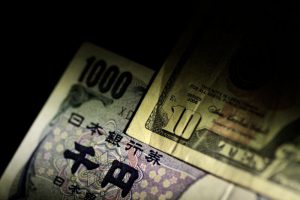
By Ritu,
Japan plans to trim government bond issuance by 0.5% next fiscal year from current year’s levels, government officials said on Wednesday, as Prime Minister Shinzo Abe walks a fine line between supporting an economy and reining in huge public debt.
The drop would mark the seventh straight year of declines in total debt issuance, despite rising fiscal spending as worries grow that cooling global growth and the U.S.-China trade war could hit corporate tax income in export-led Japan.
The government is set to sell 128.8 trillion yen ($1.19 trillion) of Japanese government bonds (JGBs) in the next fiscal year beginning in April 2020, down from this year’s 129.4 trillion yen, the two officials told Reuters on condition of anonymity because the plan has not yet been announced.
Of the total, the government is considering increasing issuance of JGBs with maturity of 40 years by 600 billion yen from the current fiscal year to 3 trillion yen, the officials said, in a nod to solid demand from investors hunting for yield amid years of ultra-low interest rates.
The government is expected to approve its draft budget for next fiscal year on Friday.
After peaking at a record 156.6 trillion yen issued in fiscal 2013, government bond issuance has been declining and helping Abe argue that Japan is keeping its fiscal house in order while boosting spending to reflate the economy.
Still, Japan’s public debt is the highest among advanced economies and total spending under next fiscal year’s budget is likely to hit a new record. And yet, bond yields have been kept low due to the Bank of Japan’s aggressive buying under a policy that caps 10-year government bond yields around 0%.
The increase in supply of 40-year bonds could alleviate the pain of investors, though many analysts doubt that the effect on steepening the yield curve would be sustainable.


